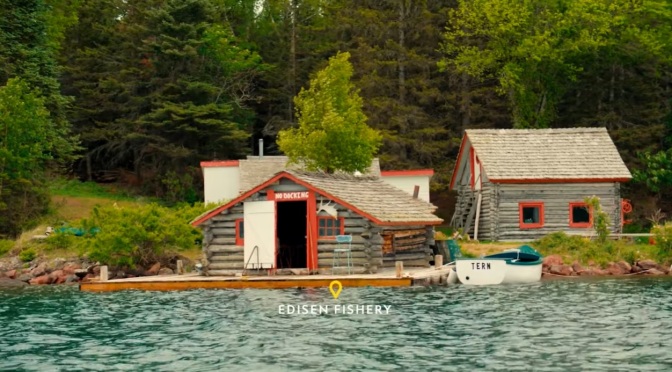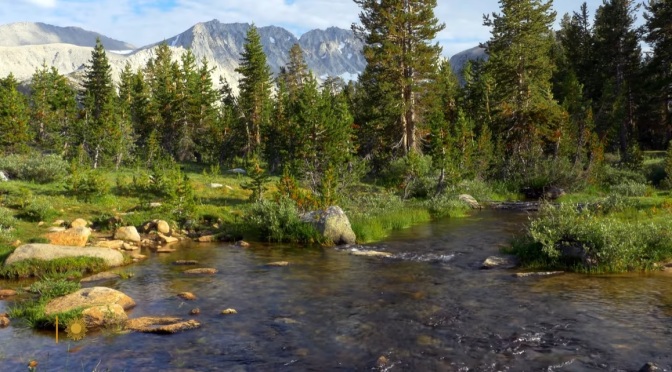Wildlife Film Festival Rotterdam – WFFR (August 11, 2023) – On the plains of South Dakota, a community of rodents struggles to survive under harsh conditions. In addition, quarrels and conflicts within the colony make life quite difficult… But thanks to a special ‘dog language’, they can prevent attacks from coyotes and badgers.
Category Archives: Nature
Michigan Travel: A Tour Of The Upper Peninsula
National Geographic (August 9, 2023) – From mountain biking to experiencing the northern lights, join National Geographic Photographer Michael George as he explores Michigan’s Upper Peninsula.
The Upper Peninsula is a forested region in Michigan bordering 3 of the Great Lakes and extending outward from Wisconsin. It’s connected to Michigan’s Lower Peninsula by the roughly 5-miles-long Mackinac Bridge, which spans the Straits of Mackinac.
Sandwiched between the 2 peninsulas is Mackinac Island, a car-free vacation destination with the iconic 1887 Grand Hotel and the Victorian-era Fort Mackinac.
Nature: Filming Birdlife In America’s Arctic Wetlands
Cornell Lab of Ornithology (July 26, 2023) – The tundra wetlands in the heart of America’s Arctic, centered in the NPR-A around Teshekpuk Lake, are among the most extensive in the circumpolar Arctic and contain some of the highest recorded densities of breeding shorebirds in this vast area.
Millions of birds from all over the world flock to these wetlands every year to nest and raise their young. Come along with Cornell Lab’s Gerrit Vyn as he joins a team to capture image of the region’s birdlife.
America’s Arctic is one of North America’s last great wilderness areas, a critical habitat for migratory birds from around the world, and a treasure to be protected for future generations.
California Views: John Muir Wilderness Area
CBS Sunday Morning (July 2, 2023) – The John Muir Wilderness area extends along the crest of the Sierra Nevada of California for 90 miles, in the Inyo and Sierra National Forests. Established in 1964 by the Wilderness Act and named for naturalist John Muir, it encompasses 652,793 acres.
Videographer: Scot Miller.
Oceans: “Into The Abyss – Worlds Of The Deep” (2023)
Natural World Facts Films (June 17, 2023) – Explore the wonders of the deep ocean as you’ve never seen them before. This is a collaborative film series with Schmidt Ocean Institute, using their extensive library of 4K footage from an array of deep sea ecosystems.
Below are the episodes in order (subject to change):
- 1 – The Twilight Zone
- 2 – The Midnight Zone
- 3 – The Abyssal Plain
- 4 – Seamounts and Canyons
- 5 – Hydrothermal Vents
Schmidt Ocean Institute is a non-profit oceanographic research foundation that has been pioneering deep-sea research and discovery since 2009, on board their old vessel RV Falkor and their brand new RV Falkor (too), the most advanced marine research vessels in the world.
Their remotely operated vehicle (ROV) SuBastian is equipped with a suite of sensors and a 4K camera that has illuminated the depths and live-streamed dives around the world. All footage shown is filmed and provided by Schmidt Ocean Institute.
Environment: The Grand Canyon Is Losing Its River

The New York Times (June 6, 2023) – Down beneath the tourist lodges and shops selling keychains and incense, past windswept arroyos and brown valleys speckled with agave, juniper and sagebrush, the rocks of the Grand Canyon seem untethered from time. The oldest ones date back 1.8 billion years, not just eons before humans laid eyes on them, but eons before evolution endowed any organism on this planet with eyes.
The Grand Canyon, a Cathedral to Time, Is Losing Its River
Written and photographed by Raymond Zhong, who joined scientists on a 90-mile raft expedition through the canyon.

Since 1963, the Glen Canyon Dam has been backing up the Colorado for nearly 200 miles, in the form of America’s second-largest reservoir, Lake Powell. Engineers constantly evaluate water and electricity needs to decide how much of the river to let through the dam’s works and out the other end, first into the Grand Canyon, then into Lake Mead and, eventually, into fields and homes in Arizona, California, Nevada and Mexico.
Spend long enough in the canyon, and you might start feeling a little unmoored from time yourself.

The immense walls form a kind of cocoon, sealing you off from the modern world, with its cell signal and light pollution and disappointments. They draw your eyes relentlessly upward, as in a cathedral.
You might think you are seeing all the way to the top. But up and above are more walls, and above them even more, out of sight except for the occasional glimpse. For the canyon is not just deep. It is broad, too — 18 miles, rim to rim, at its widest. This is no mere cathedral of stone. It is a kingdom: sprawling, self-contained, an alternate reality existing magnificently outside of our own.
And yet, the Grand Canyon remains yoked to the present in one key respect. The Colorado River, whose wild energy incised the canyon over millions of years, is in crisis.
Wildlife Documentary: ‘Secrets Of The Elephants’
National Geographic (May 21, 2023) – Elephants are powerful, loving and wise, but we are only starting to unlock their deepest secrets.
The ground-breaking, award-winning natural history franchise Secrets Of returns with its next installment, Secrets of the Elephants. From Academy Award®-winning filmmaker and National Geographic Explorer-at-Large James Cameron, the series travels the world — from the Savannahs of Africa to the urban landscapes of Asia — to discover the strategic thinking, complex emotions and sophisticated language of elephants, shaping a unique and dynamic culture.
Narrated by Academy Award-winning actress Natalie Portman and featuring renowned National Geographic Explorer and elephant expert Dr. Paula Kahumbu, the four-part series not only reveals the extraordinary lives of different families of elephants but also highlights how similar they are to us. Secrets of the Elephants will change everything you thought you knew about elephants forever.
Washington Views: Skagit Valley Tulip Festival 2023
CBS Sunday Morning (May 14, 2023) – You don’t have to travel to Holland to experience fields of tulips. The climate in the northwest corner of Washington State is perfect for the flower, making it home of the annual Skagit Valley Tulip Festival. Correspondent Conor Knighton reports.
BBC Tributes: Sir David Attenborough Turns 97
BBC (May 8, 2023) – Sir David Attenborough was born in London on May 8, 1926 and educated at Wyggeston Grammar School, Leicester, and Clare College, Cambridge where he took an honours degree in Natural Sciences. He did two years National Service in the Royal Navy and then spent some time on the editorial side of the University of London Press.
Sir David’s broadcasting career spans over 50 years. It began in 1952 when he joined BBC Television as a trainee and then became a producer working in the studios of Alexandra Palace in north London, from which the world’s first television service was broadcast.
Nature: White-Tailed Deer, Cades Cove, Great Smoky Mountains Of Tennessee
CBS Sunday Morning (April 30, 2023) – This Sunday morning we visit Cades Cove in Great Smoky Mountains National Park in Tennessee.
Cades Cove is an area in the Great Smoky Mountains National Park that was formerly home to many settlers before the national park was established. It has a long, rich history that is still standing for exploration by visitors today.
The Cades Cove loop is open to visitors from sunrise to sunset daily, with a special vehicle-free Wednesday during the summer to allow for bikers and hikers to enjoy the loop safely. Read on to learn more about Cades Cove, including information on the area’s location, history and landmarks.
Videographer: Scot Miller










